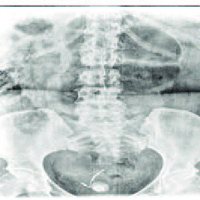A rare, ectopic (intravesical) location of a missing intrauterine contraceptive device, a case report

Submitted: 18 December 2020
Accepted: 29 January 2021
Published: 1 March 2021
Accepted: 29 January 2021
Abstract Views: 282
PDF: 157
Publisher's note
All claims expressed in this article are solely those of the authors and do not necessarily represent those of their affiliated organizations, or those of the publisher, the editors and the reviewers. Any product that may be evaluated in this article or claim that may be made by its manufacturer is not guaranteed or endorsed by the publisher.
All claims expressed in this article are solely those of the authors and do not necessarily represent those of their affiliated organizations, or those of the publisher, the editors and the reviewers. Any product that may be evaluated in this article or claim that may be made by its manufacturer is not guaranteed or endorsed by the publisher.

 https://doi.org/10.4081/acbr.2021.130
https://doi.org/10.4081/acbr.2021.130



